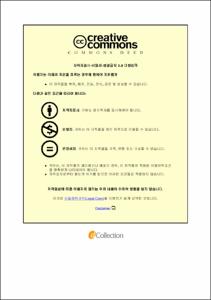부산 지역어 단모음 /ㅡ/와 /ㅓ/의 세대 간 차이
- Alternative Title
- Generational Differences between /ㅡ/ and /ㅓ/ in Busan dialect
- Abstract
- The purpose of this study is to observe a change of /ㅡ/ and /ㅓ/ according to the generation in Busan. Busan dialect has been considered to have six monophthongs of /ㅣ, ㅡ, E (ㅔ / ㅐ), ㅏ, ㅜ, ㅗ, Ǝ (ㅡ/ㅓ)/ like another Gyeongnam dialect. But there are difference of vowel system by generations. Younger generation use seven vowels of /ㅣ, ㅡ, E (ㅔ / ㅐ), ㅏ, ㅜ, ㅗ, Ǝ (ㅡ/ㅓ)/. This paper hypothesized that change of two vowels is influenced by mass media. Two experiment are carried out for this study. First experiment is a perception test on nonce words. Second test is a production test on relevant words. Data have been collected from 42 informants. The result of fieldwork and analyses is as follows: (1) Results of the perception experiment, speakers in their 20s, 30s, 40s exceed 95% of correct answers. But speakers in their 50s got 67.2 percentage of correct answers. (2) Results of the production experiment, there are differences of in the informants by ages. 50s cannot distinguish /ㅡ/ from /ㅓ/. Younger speakers pronounce the vowel /ㅡ/ as a more fronted vowel than older speakers. But they pronounce the vowel /ㅓ/ as a more backed vowel than older speakers. So younger speakers have a long distance between the two vowels than older speakers. (3) If the age of when the speakers first watched TV is low they are more likely to get high scores on the perceptual experiment and distance between the two vowels is longer. But Age of first watching TV less affected distinction /ㅡ/ and /ㅓ/ than ages. In conclusion, the vowel system of Busan dialect changes across ages. And speakers in their 50s cannot distinguish /ㅡ/ from /ㅓ/. On the other hand, the others age groups distinguish /ㅡ/ from /ㅓ/ exactly.
- Issued Date
- 2016
- Awarded Date
- 2016. 8
- Type
- Dissertation
- Keyword
- 부산 지역어(Busan dialect) /ㅡ/ /ㅓ/ 세대 간 차이(Generational difference) 단모음(Monophthong) 인지 실험(Perceptual experiment) 산출 실험(Production experiment) 인지와 산출의 관계(Correction between production and perception) 미디어의 영향(Affection of media).
- Publisher
- 부경대학교 대학원
- Affiliation
- 부경대학교 대학원
- Department
- 대학원 국어국문학과
- Advisor
- 권성미
- Table Of Contents
- Ⅰ. 서론 1
Ⅱ. 이론적 배경 11
1. 부산 지역 단모음체계의 특징 11
2. 표준어 확산과 대중매체의 영향력 13
Ⅲ. 단모음 /ㅡ/와 /ㅓ/ 변별 실험 17
1. 단모음 /ㅡ/와 /ㅓ/ 음성 인지 실험 17
가. 실험 대상 17
(1) 조사 지역 17
(2) 피험자 20
(3) 실험 도구 26
나. 실험 절차 26
다. 자료 분석 방법 28
2. 단모음 /ㅡ/와 /ㅓ/ 음성 산출 실험 28
가. 실험 대상 28
(1) 피험자 28
(2) 실험 도구 28
나. 실험 절차 30
다. 자료 분석 방법 34
Ⅳ. 부산 지역어의 세대 간 단모음 비교 36
1. 세대 간 /ㅡ/와 /ㅓ/의 음성 인지 분석 36
가. 50대의 /ㅡ/, /ㅓ/ 인지 실험 결과 36
나. 40대의 /ㅡ/, /ㅓ/ 인지 실험 결과 37
다. 30대의 /ㅡ/, /ㅓ/ 인지 실험 결과 37
라. 20대의 /ㅡ/, /ㅓ/ 인지 실험 결과 38
마. 세대 간 /ㅡ/와 /ㅓ/ 음성 인지 비교 39
2. 세대 간 /ㅡ/와 /ㅓ/의 음성 산출 분석 41
가. 50대의 /ㅡ/, /ㅓ/ 산출 실험 결과 41
나. 40대의 /ㅡ/, /ㅓ/ 산출 실험 결과 44
다. 30대의 /ㅡ/, /ㅓ/ 산출 실험 결과 46
라. 20대의 /ㅡ/, /ㅓ/ 산출 실험 결과 49
마. 세대 간 /ㅡ/와 /ㅓ/ 음성 산출 비교 52
바. /ㅡ/와 /ㅓ/ 인지와 산출의 상관관계 58
3. /ㅡ/-/ㅓ/ 변별에 미치는 대중매체의 영향 59
Ⅴ. 결론 67
참고문헌 71
국문초록 75
- Degree
- Master
- Files in This Item:
-
-
Download
 의 세대 간 차이.pdf
기타 데이터 / 1.46 MB / Adobe PDF
의 세대 간 차이.pdf
기타 데이터 / 1.46 MB / Adobe PDF
-
Items in Repository are protected by copyright, with all rights reserved, unless otherwise indicated.